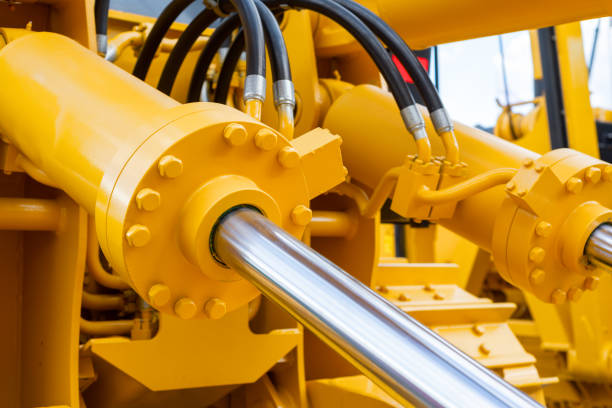Hydraulic System- What Are Its Five Components?
Posted on March 24th, 2022
Hydraulic systems are used in a wide range of applications today in hydraulic companies, from simple assembly operations to integrated steel and paper mills. Through Pascal’s law, the operator may achieve multiple tasks like lifting large weights, drilling precise holes, rotating a shaft, and so on, with a minimum investment in mechanical linkage.
“Any pressure applied to a confined fluid at a particular point is distributed throughout the fluid in every direction, but only at right angles inside it and on equal areas on every component of the confining vessel.”
It is obvious that an input force of 100 pounds on 10 square inches will create a pressure of 10 pounds per square inch throughout the confined vessel when using Pascal’s law and Brahma’s application of it. If the weight is 100 square inches, this pressure will sustain a 1000-pound weight.
The hydraulic fluid that is used to convey energy from one place to another embodies the idea of Pascal’s law in a hydraulic system. Hydraulic fluid can transmit power instantly because it is primarily incompressible.
Components of the Hydraulic System
Take a look at the five main components of the hydraulic system given below:
Reservoir
The hydraulic reservoir’s role is to contain a fluid volume, transfer heat from the system, enable solid impurities to settle, and make air and moisture escape from the fluid easier. The industrial filters are located within the reservoir itself.
Pump
Mechanical energy is converted into hydraulic energy with the help of the hydraulic pump. The flow of fluid, which serves as the transmission channel, accomplishes this. Hydraulic pumps come in various shapes and sizes, including gear, vane, and piston. Different kinds of these pumps, such as a variable displacement vane pump or a bent-axis piston pump, are designed for various uses. The basic concept of all hydraulic pumps is to displace fluid volume against a resistive load or pressure.
Valves
Hydraulic valves are used to start, halt, and guide the fluid flow in a system. Pneumatic, hydraulic, electrical, manual, or mechanical actuation can be used to operate hydraulic valves formed up of poppets or spools.
Actuators
Pascal’s law has resulted in hydraulic actuators. The hydraulic energy is transformed back to mechanical energy at this point. A hydraulic cylinder, which translates hydraulic energy into linear motion and work, or a hydraulic motor, which converts hydraulic energy into rotating motion and position, can be used to do this. Hydraulic cylinders and hydraulic motors, like hydraulic pumps, come in various subtypes, each designed for a unique design purpose.
Pressure Regulator
A pressure regulator regulates the hydraulic fluid’s pressure (i.e., maintained). Fluid is carried from the storage tank to one side of the piston and returned from the opposite side of the piston to the tank through closed-loop pipework. A pump draws the fluid from the tank and creates fluid flow at the desired pressure level. If the fluid pressure rises beyond the specified level, the extra fluid returns to the reservoir and remains there until the pressure falls below it.
Why Does Hydraulics Use Oil And Not Water?
The necessity for lubrication inside hydraulic systems is the primary cause for this. A hydraulic system contains several moving pieces that brush against one another. This would result in corrosion and premature wear if not lubricated. Oil forms a layer on the surface of moving parts that functions as a lubricant while they are in motion. The industrial filters help to remove the dirt and keep the oil clean continuously.
The temperature inside a hydraulic system can reach dangerously high levels, and water has a low boiling point. The water boils very compressible, causing the entire system to work inefficiently.
Hydraulic oils have a more excellent boiling point and a lower freezing point. This indicates that the system can operate across a wide temperature range. In the presence of air, water causes the system’s interior components to rust and corrode. This causes the system to degrade prematurely.
You are most likely to find the application of the hydraulic systems in your day to day life and various hydraulic companies. Hydraulic systems are pretty complicated, and each one differs somewhat based on its intended application. For a plan to work correctly, it must include these five essential components.

